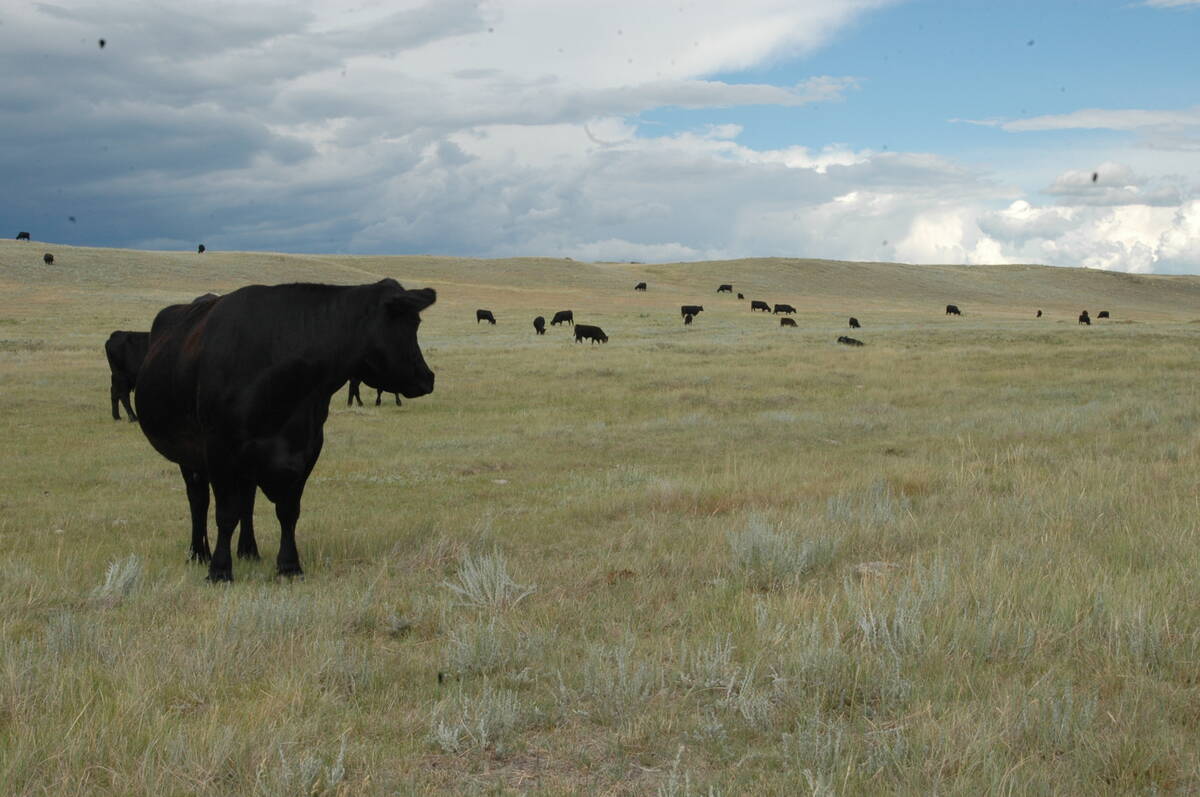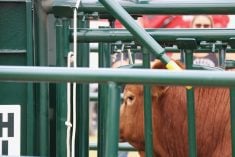There are many decisions in either feedlot, cow-calf or backgrounder situations where timely decisions have to be made regarding whether to treat, harvest or euthanize.
I am hoping this article, by citing a few examples, may make this clearer.
Producers don’t need to make these decisions alone. Modern communications such as cellphone cameras, videos in combination with texts and phone conversations mean that help is at your fingertips in most cases.
Read Also

Canadian Food Inspection Agency slammed for handling of bovine tuberculosis case
The federal government leans heavily on producers to “take one for the team” and risk their livelihoods without any reassurance of support.
We all experience the sudden downer, and this spring, for some reason, I have examined or heard of many, even though dry, non-icy conditions were common.
Cows with high leg injuries or breaks are sometimes hard to examine, so it may require rolling them over to examine the other side.
It is usually easy to tell if something severe has happened. It’s when the diagnosis is in doubt that a good relationship with a veterinarian becomes imperative. They can examine photos or video and ask for other views or other things to be done.
Prudent use of antibiotics allows us to harvest more animals. Beef prices are record high right now, so expending a good amount of effort to do the right thing is what we should strive for.
The first thing to ask in these cases is whether any treatment could improve the situation. If the answer is no, then we must ask if the animal can convalesce or if emergency slaughter is the best option.
Either the local butcher is contacted or arrangements are made with provincial plants. Alberta has a program in which an ante mortem inspection can be made by video, which allows the meat to be provincially inspected and taken into the plant.
If it’s evening or a holiday, the producer must then decide if the animal is comfortable and can be humanely left overnight. This is a decision best made with the help of a veterinarian if the producer is unsure.
Producers must keep animals with conditions such as chronic lameness as comfortable as possible in a small pen with food, water and good bedding.
Many feedlots use a guide of weight gain. Very slow or cessation in weight gain indicates suffering and the animal must be euthanized for disposal or harvesting. These can be hard decisions to make but asking for advice and pulling the plug sooner rather than later is often the right way to go.
We all know how miraculously conditions such as milk fever, bloat, grass tetanus and some neurological cases can turn around. This means we need the right diagnosis and we need to treat the cases that have a good chance of responding.
There is no withdrawal time for products used to treat many of the conditions I have mentioned, such as calcium, phosphorus and magnesium. Even if they are given by mistake for a downer that has a broken leg, the animal could still be butchered, so no harm done.
Back problems in a breeding bull is another condition to watch.
One may first see knuckling or some form of ataxia, and there may be an area of swelling over the back. Rest may yield a favourable result, but the animal could also become a downer, and with a big bull, this could pose a real problem.
Downer bulls are hard to examine, and one must be careful when working around the head for fear of getting head butted.
Some breeding bulls have large values, and insurance cases may lead to alternative treatments. If the animal is an insurance case, it is better to report it directly and then work with the insurance agent to see which direction it wants to take.
It is very hard to predict the outcome in many of these cases, so once treatment is initiated with drug withdrawals, we are stuck with going that route.
Fighting injuries in bulls can result in non-specific vague signs, and one needs to think of emergency slaughter fairly quickly if the animal starts to lose weight. A large slaughter bull can earn several thousand dollars, so it’s well worth the effort.
Emergency slaughter is often considered if there is non-specific weight loss and no temperature.
Astute producers who have experienced a Johne’s case know to watch for “diarrhea weight loss with still an appetite” and will cull as soon as they see this to prevent disease spread.
The meat from Johne’s-infected cattle is edible, but don’t leave it too long because the animal could eventually be condemned due to emaciation. I also think letting cows get extremely thin is an animal welfare issue, so please avoid it. Be proactive and do something ahead of time.
When butchering on farm and something abnormal is found, take pictures and ideally save the specimen to show to an inspector or a large animal veterinarian. This is something else your veterinarian should be involved in.
As well, many producers in Alberta are approved as ante mortem inspectors. Check to see how the system is set up in your province.
Every cattle producer comes across these cases, and it is good to have some sort of plan to avoid being caught off guard.
Roy Lewis works as a veterinarian in Alberta.















